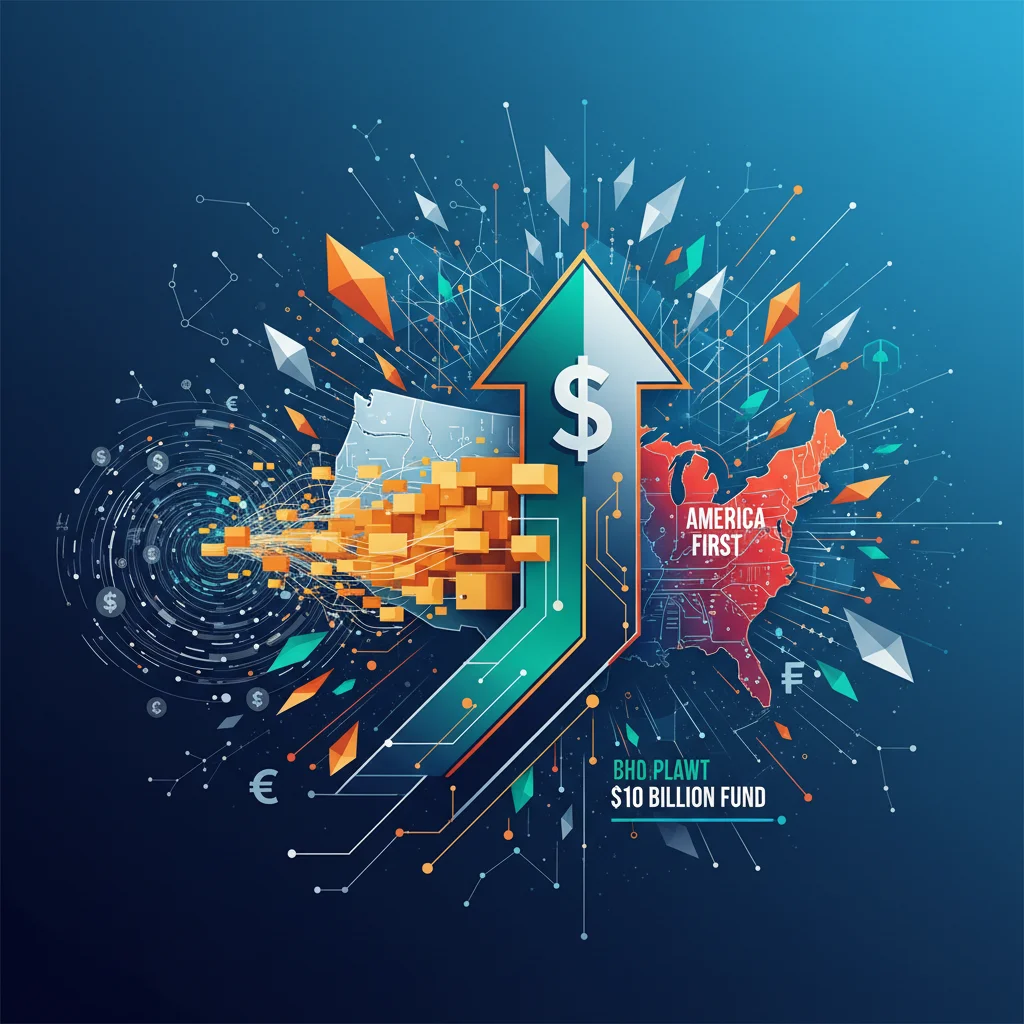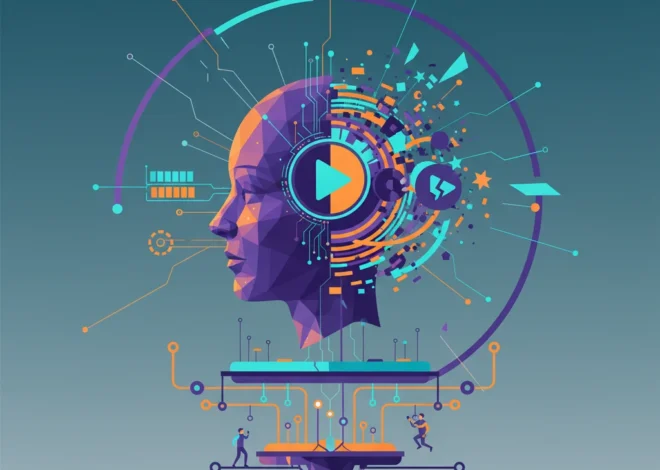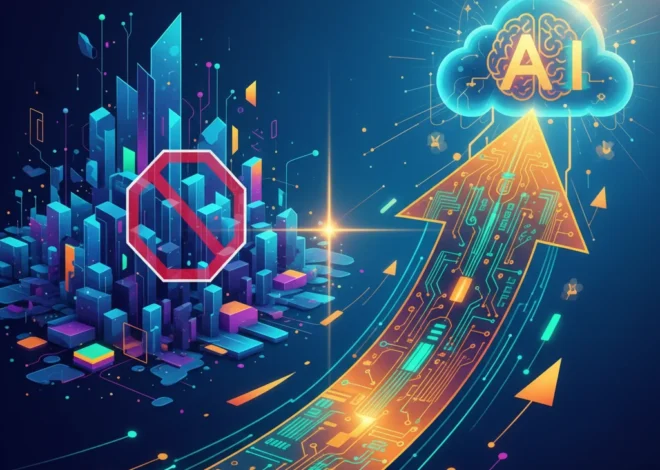
JPMorgan’s $10 Billion “America First” Fund: What This Means for the Future of Tech
We’re living through a tectonic shift. For decades, the gospel of globalization preached efficiency above all else. Supply chains snaked across the globe, chasing the lowest costs, and capital flowed freely to wherever it could find the highest return. But the world has changed. The pandemic exposed the fragility of those long-distance connections, and geopolitical tremors are now shaking the very foundations of the global economy.
Enter Wall Street’s answer to this new reality. In a move that’s sending ripples through both finance and technology, JPMorgan is launching a private capital strategy to invest up to $10 billion in American companies deemed “essential” to the nation’s economic security. Dubbed “Project Bond,” this initiative, championed by CEO Jamie Dimon, represents a powerful alignment of private capital with the “America First” policies that have gained bipartisan traction in Washington.
But this is far more than just a headline about a big bank and a big number. It’s a profound signal about where the smart money is heading and what the future of innovation looks like. For startups, developers, and entrepreneurs, this isn’t just news—it’s a roadmap and a massive opportunity. Let’s break down what this seismic shift really means.
The “Why” Behind the Billions: A New World Order
JPMorgan’s move isn’t happening in a vacuum. It’s a direct response to a world grappling with new risks and priorities. The era of unbridled globalism is giving way to an age of strategic competition, and the concept of “national security” has expanded far beyond military hardware. Today, it encompasses everything from semiconductor supply chains to the integrity of our cloud infrastructure.
Several key drivers are fueling this pivot:
- Supply Chain Vulnerability: The COVID-19 pandemic was a brutal wake-up call. The world discovered that the production of critical goods, from medical supplies to microchips, was concentrated in just a few geographic locations, making the entire global economy vulnerable to disruption.
- Geopolitical Tensions: The war in Ukraine and rising tensions over Taiwan have made dependency on geopolitical rivals for critical technology a five-alarm fire for policymakers and CEOs alike. The idea of a foreign adversary controlling the flow of essential components is no longer a theoretical risk.
- The Tech Arms Race: Supremacy in next-generation technologies like artificial intelligence, quantum computing, and biotech is now a central theater of global competition. A nation that leads in AI and machine learning doesn’t just gain an economic edge; it gains a strategic one. According to a report from the Center for Strategic and International Studies (CSIS), this technological “decoupling” is accelerating as both the US and China aim for self-sufficiency in critical tech domains.
This new landscape has been reinforced by landmark government initiatives like the CHIPS and Science Act and the Inflation Reduction Act. These policies are pouring hundreds of billions of dollars into incentivizing domestic manufacturing and innovation. As the White House stated, the CHIPS Act aims to “strengthen American manufacturing, supply chains, and national security.” (source). JPMorgan’s Project Bond is essentially the private sector equivalent—a capitalistic engine designed to power this national project.
Mapping the Investment Battlefield: Where the $10 Billion Will Go
So, what exactly does an “essential” company look like in the eyes of JPMorgan’s asset managers? The focus is on foundational technologies and industries that underpin the entire modern economy. These are the sectors where domestic capability is no longer a “nice-to-have” but a “must-have.”
Here’s a breakdown of the key target areas and their strategic significance:
| Essential Sector | Strategic Importance & Tech Focus |
|---|---|
| Semiconductors | The bedrock of the entire digital world. These chips power everything from iPhones and cars to data centers and advanced weaponry. Onshoring production reduces reliance on volatile regions and secures the core ingredient for all future tech. |
| Artificial Intelligence & Machine Learning | The engine of 21st-century innovation and productivity. This includes everything from developing sovereign Large Language Models (LLMs) to applying AI in manufacturing, defense, and drug discovery. The focus will be on software, algorithms, and the cloud infrastructure to support them. |
| Infrastructure & Advanced Manufacturing | Rebuilding America’s industrial base with modern technology. This means smart factories, robotics, and industrial automation powered by sophisticated SaaS platforms to make domestic production cost-competitive and resilient. |
| Cybersecurity | The digital shield for all other critical sectors. As we bring more infrastructure and manufacturing online and onshore, protecting it from state-sponsored and criminal cyberattacks becomes a paramount national security issue. This is a massive area for software and security startups. |
| Life Sciences & Biotech | Ensuring national health security. The pandemic revealed the dangers of relying on other nations for pharmaceuticals and medical equipment. Investment will target domestic R&D, drug manufacturing, and biotech innovation. |
For those in the tech world, the message is crystal clear. The demand for skills and products in these areas is about to be supercharged by a torrent of private capital. Whether you’re working on a new programming language for robotics, a SaaS platform for supply chain management, or a next-gen cybersecurity algorithm, your work is now at the heart of this national strategic pivot.
My prediction? This is the first of many such funds. We’re going to see a new asset class emerge at the intersection of private equity, venture capital, and national interest. The big question is whether this will lead to a more robust, innovative American economy or create protected, inefficient “national champions” that can’t compete on a global scale. The execution will determine whether this is a masterstroke of strategic capitalism or a slide towards cronyism. For now, it’s one of the most fascinating trends to watch.
What This Means for You: A Guide for Innovators and Builders
This isn’t just an abstract financial trend; it has real-world implications for everyone in the tech ecosystem. Whether you’re founding a company, writing code, or investing in the next big thing, here’s how this shift impacts you.
For Startups and Entrepreneurs:
If you’re building a company in one of the “essential” sectors, you’ve just been handed a golden ticket. Traditional venture capital can sometimes be hesitant to fund startups that require heavy R&D, physical infrastructure, or have longer timelines to profitability. This fund is specifically designed for you.
- A New Funding Pipeline: You now have a massive, well-capitalized potential investor who understands the strategic, long-term value of what you’re building, not just the potential for a quick 10x exit.
- Strategic Alignment is Key: When pitching, frame your mission in the context of national and economic security. How does your automation technology make American factories more competitive? How does your cybersecurity platform protect critical infrastructure? This narrative is now a powerful asset. According to a PitchBook analysis, “deep tech” investments have shown resilience because their innovations are often tied to fundamental societal needs.
- Focus on “Hard Tech”: This is a boom time for startups working on atoms, not just bits. Robotics, materials science, biotech, and advanced manufacturing are back in the spotlight.
For Developers and Tech Professionals:
Your skills have just been reclassified as a strategic national asset. The demand for talent to build out this new American-centric tech infrastructure will be immense.
- High-Value Skills: Expertise in AI/machine learning, industrial IoT, operational technology (OT) security, and cloud-native development for industrial applications will be in red-hot demand. Your ability to write secure, efficient code for an automation system is now part of a bigger mission.
- Mission-Driven Work: For many, the tech industry’s “move fast and break things” ethos has grown tiresome. This shift offers a chance to work on projects with tangible, national importance—from securing the energy grid to designing the next generation of life-saving medicines.
- The Convergence of IT and OT: The lines between traditional enterprise software and the software that runs physical systems are blurring. Professionals who can bridge this gap—who understand both programming and physics, both cloud architecture and factory floors—will be the most valuable players in this new economy.
The Dawn of a New Economic Era
JPMorgan’s Project Bond is more than a fund; it’s a bellwether. It signifies the end of an era defined by the pursuit of pure, borderless efficiency and the beginning of one defined by the pursuit of strategic resilience. The lines between Wall Street, Silicon Valley, and Washington are blurring into a new public-private partnership aimed at securing America’s technological future.
This journey won’t be without its challenges. It requires a long-term vision, patient capital, and an unprecedented level of collaboration. But the direction of travel is clear. The future of innovation will be built on a foundation of security, sovereignty, and resilience.
For the builders, the creators, and the innovators, this is your call to action. The tools you create—the software you write, the algorithms you design, the companies you build—are no longer just products. They are the essential building blocks of a more secure and prosperous future.


